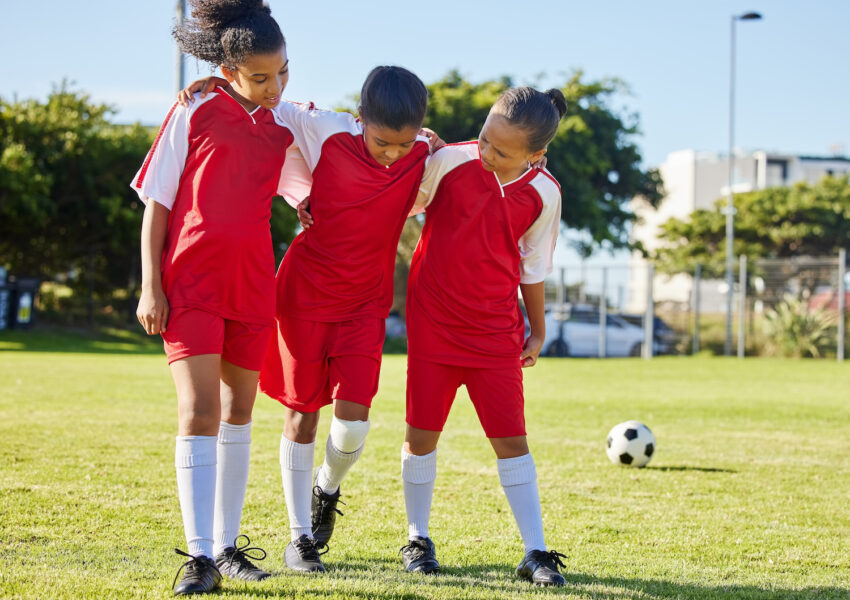
As a parent, it’s only natural to worry about the safety of your teenagers, especially when they participate in sports activities. Sports are a great way for teens to stay active and develop valuable life skills, but they also come with the risk of injuries. To help you ensure the well-being of your young athletes, we’ve put together a small guide on preventing sports-related injuries.
Understanding the Risks
- The Impact of Sports on Teenage Bodies
Teens are still growing and developing, which makes them more vulnerable to certain types of injuries. Their bones, muscles, and tendons are not yet fully matured, putting them at a higher risk for fractures and sprains.
- Common Sports Injuries Among Teens
Those engaged in sports can experience a range of injuries, such as sprains, strains, fractures, concussions, and overuse injuries like tendinitis. Understanding these common injuries will help you identify potential risks your teen may face.
Prevention Strategies
- Warm-Up and Cool-Down Routines
Encourage your teen to dedicate time to warm-up exercises before each practice or game. This will help increase their blood flow, loosen muscles, and reduce the risk of strains. Similarly, cooling down afterwards can prevent muscle soreness and aid in recovery.
- Protective Gear
Ensure that your teen wears the necessary protective gear for their specific sport. This may include helmets, mouth guards, knee pads, shin guards, or padded clothing. Investing in quality gear that fits properly is crucial for optimal protection.
- Proper Technique and Form
Enroll your teen in sports programs or seek professional coaching where they can learn proper technique and form. This is important for preventing injuries caused by incorrect movements and minimizing the risk of accidents.
- Rest and Recovery
Teens often have a lot on their plates, juggling school, sports, and other activities. Make sure your teen has regular rest days to allow their bodies to recover. Avoid excessive training and encourage healthy sleep patterns to aid in their overall well-being.
- Nutrition and Hydration
Proper nutrition and hydration are essential for overall health and injury prevention. Ensure your teen has a balanced diet rich in nutrients, including protein, calcium, and vitamins. Encourage them to drink plenty of water before, during, and after physical activity to stay hydrated.
- Monitoring Overuse and Fatigue
Teens are ambitious and may push themselves too hard. Monitor your teen’s sports participation to prevent overuse injuries. If they complain of pain or show signs of fatigue, it’s important to intervene and provide appropriate rest.
- Promoting Open Communication
Encourage your teen to communicate openly about any pain, discomfort, or concerns they may have. Establishing a trusting relationship will empower them to seek help when needed and address potential injuries before they worsen.
Creating a Safe Environment
It’s essential to ensure that the sports environment is safe for your teen. Evaluate the facilities, equipment, and training protocols of the sports programs they are involved in. If you have concerns, discuss them with the coaches or administrators. Creating an open line of communication and being proactive about safety will help minimize the risk of injuries.
EyeBOX – Concussion Assessment
Concussions are one of the many common sports related injuries. If your child has suffered a head injury, we are currently offering the newest technology – EyeBOX (concussion assessment).
During the EyeBOX assessment, a patient is asked to follow a moving target with their eyes, while their eye movements are tracked and recorded. The software then analyzes these eye movements and compares them to a database of healthy eye movement patterns. Any deviations from the normal eye movement patterns can indicate visual impairments associated with a concussion.
Conclusion
By following these preventative strategies, parents can significantly reduce the risk of sports-related injuries among their teen athletes. It’s crucial to stay informed, provide guidance, and foster a safe and supportive environment for their sports activities. Remember, prevention is key in ensuring your teenagers can enjoy the benefits of sports while staying injury-free.
Little Spurs Pediatric Urgent Care opened in 2006 in San Antonio, Texas. With multiple locations in San Antonio and Dallas, they are open seven days a week with extended evening hours and see walk-in patients or through an online check-in system. They accept most commercial insurance and Medicaid plans.



